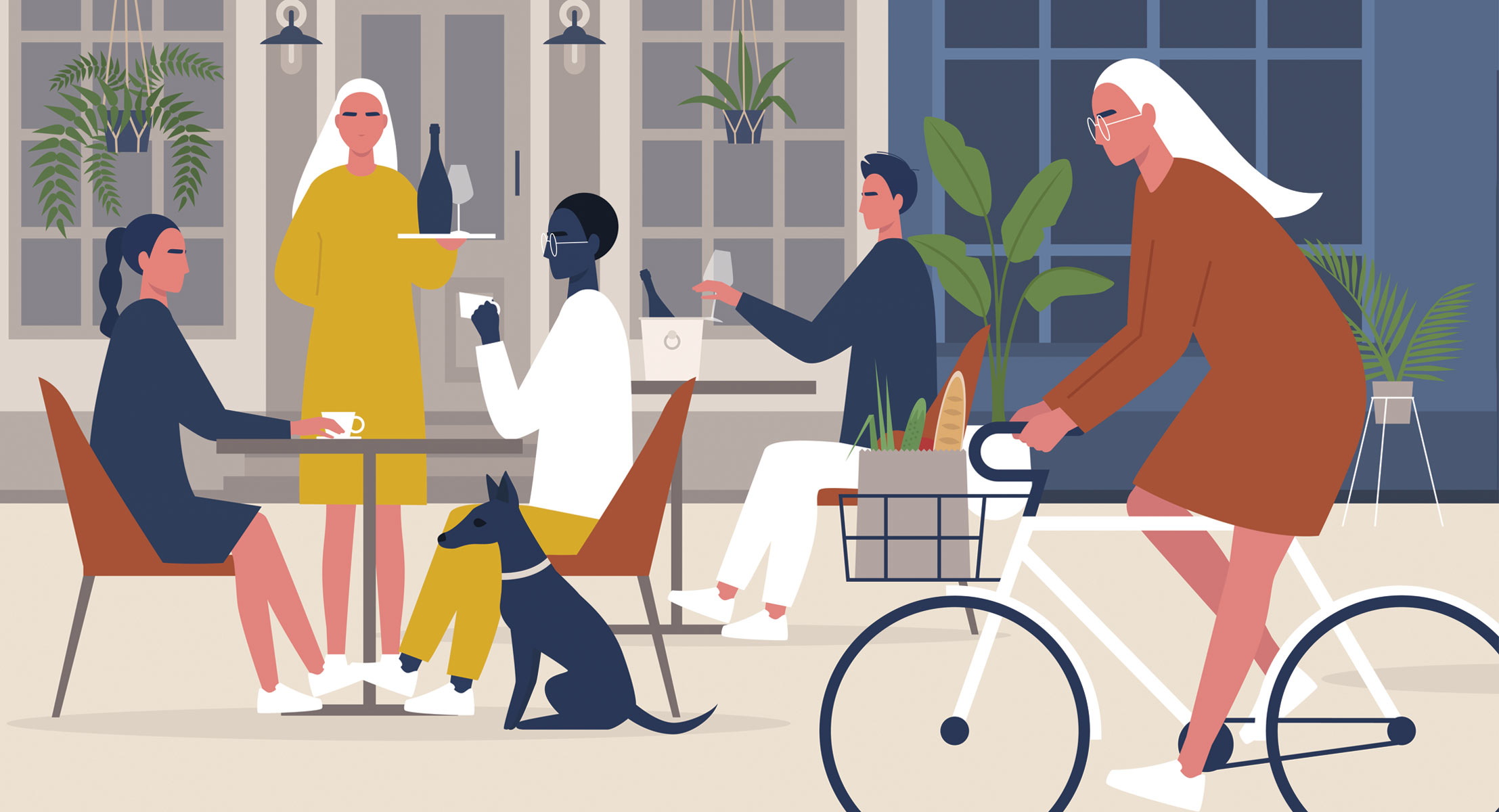
Leading Philadelphia’s Pandemic-Weary Old City Back to Life
But these days, Job Itzkowitz L’04, the Executive Director of Old City District, is delighted that signs of life are returning to Independence Hall and the Liberty Bell.
As Executive Director, a role he’s held since 2014, Itzkowitz manages the day-to-day operations of Old City District, which is one of Philadelphia’s 15 Business Improvement Districts (BID). Old City District operates as a municipal authority, supplementing municipal services, and its budget is paid by commercial property owners in the district. For example, Old City District funds daily street sweeping, private security teams, police details, text alert systems to connect businesses, streetscape improvements and economic development work. It hosts both the annual Old City Fest and the summertime Old City Eats Happy Hour.
COVID-19, however, changed everything. “Like anywhere in the world, it was a big challenge, and Old City was no exception,” he said.
When everything shut down in March 2020, Old City had to get creative to survive.
Old City District began sending daily business emails to keep stakeholders abreast of constantly changing rules and resources. “It was like drinking from a firehose,” he said.
Business owners had to quickly cultivate an online presence and navigate outdoor seating licenses. Old City District worked with the Philadelphia BID Alliance and the Pennsylvania Restaurant & Lodging Association to develop policies for the city to adopt regarding in-person eating options. Such policies included allowing “streeteries,” where tables and chairs could be set up in parking spaces in front of restaurants; sidewalk seating extensions whereby neighboring businesses could agree to offer their sidewalk space for outdoor dining; and dining on closed streets.
“We were the first to close the street for outdoor dining Friday afternoons till Sunday evenings during warm weather until well into the fall in 2020,” Itzkowitz said.
Still, despite best efforts, not all Old City businesses survived the past two years. Pre-pandemic, Itzkowitz said, Old City’s population was 5,000 residents, with 12,000 daily tourists and 18,000 daily office workers.
“That was a big challenge for businesses that rely on those types of people in the neighborhood to buy lunch or souvenirs,” he said. “They closed because tourists weren’t there.”
With about 300 retail storefronts, Old City had an average vacancy rate of 10 percent in 2019, Itzkowitz said. By December 2020, the rate had rocketed to 20 percent vacancy. As of spring 2022, it has dropped to 15 percent.
“Our goal is to get that number back to the pre-pandemic national average,” he said. That goal is within reach: openings and re-openings have steadily increased in Old City, with 30 new businesses opening in 2021 and 12 new businesses opening so far in 2022. “These stores are not chain stores, you can’t go to King of Prussia and see the goods that are for sale in Old City,” he said, adding that the neighborhood is home to the most women-owned businesses in the city, usually independently and locally sourced.
Itzkowitz said the residential population has grown by nearly 30 percent in the past five years, which has buoyed neighborhood business. “The resolve of residents of Old City, their support, was incredible,” he said. “They really sustained a lot of the businesses, as much as they could afford to.”
The reopening — and booking of — area hotels is promising, Itzkowitz said, as well as workers’ returning to offices.
“We’re happy to have people coming back.”